What stories could the stumps of ancient trees tell?
That is not a mystical question; it’s the stuff of science.
Jean Huffman, a fire ecologist at Louisiana State University and Tall Timbers Research Station, is decoding the secrets of ancient stumps to help Florida land managers restore the longleaf pine ecosystem. By using a combination of ancient pine stumps and tree core data, she is extending our knowledge of fire ecology back hundreds of years to figure out how often the land really burned.
Bringing Back the Burn
The story of the pineland’s demise is familiar: Flat, sandy savannahs of saw palmetto, wiregrass, and longleaf pine once stretched from Virginia to Texas and down into the Florida peninsula, covering an estimated 90 million acres. When fire is suppressed in these places shrubs, palmettos and hardwood trees take over.
Today, land managers actively burn the landscape to restore and mimic the natural cycle. But there’s a problem — we don’t actually know when or how often the pinelands burned, and there’s a distinct lack of “natural” pinelands left to provide clues.
“We have a lot of anecdotal and ideas about how these systems used to burn, but we need direct evidence,” says Huffman. “The trees are the answer.”
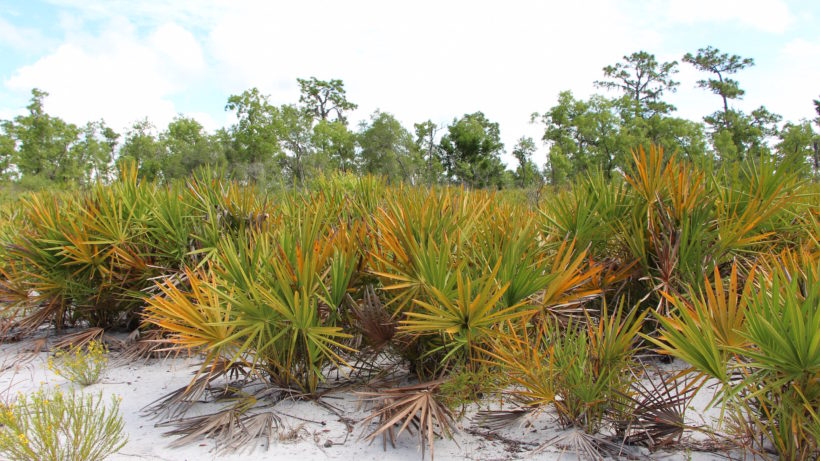
Building a Timeline, Ring by Ring
To unravel that answer, Huffman first needs a timeline.
“You start from living trees and work your way back,” she explains. Huffman is using the cores and cross sections from living trees, to create a detailed pine growth chronology for the Central Florida region.
Rainfall influences pine growth, with dry years producing narrow growth rings and wetter years producing wider rings. “That makes a recognizable pattern,” says Huffman.
She uses a computer program to compile more than 150 samples from the area. By matching the pattern of progressively older samples to the existing chronology, she is constructing a timeline that extends far beyond the life of one pine.
“You can then use this pattern to date trees of unknown origin,” she says. “It can be challenging, especially with trees that aren’t well behaved.”
Growth patterns aren’t the only thing that longleaf pines record — they also record evidence of fire. Called fire scars, these brown, sickle-shaped marks are created when the pine’s fire-resistant bark fails to protect the tree, damaging the layer of growth cells, or cambium. Eventually the tree heals itself, but a record of the damage remains, sandwiched between the normal growth rings.
These scars allow Huffman to identify both the year and season when that tree burned. But even this data can’t tell land managers how often the pinelands burn, for one simple reason: “This area was so thoroughly logged in the early 1900s that there are not a lot of old trees,” explains Huffman.
Without old trees, both her chronology and the evidence of fire only extend back to the mid 1700s, when the ecosystem was already altered by human settlement. And the data aren’t as strong as they could be, with just a handful of trees extending that far back in time.
But Huffman has figured out a way around this problem — using ancient tree stumps.
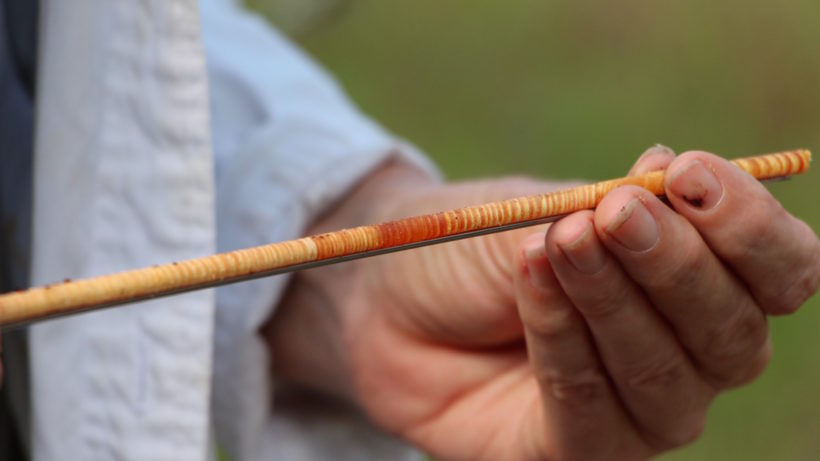
The Search for Stumps
“It’s somewhere over here,” says Jennifer Navarra, a plant ecologist at the Florida Department of Agriculture and Consumer Services. Referencing her GPS, she wades through an overgrown stand of turkey oaks on a small northern section of the Lake Wales Ridge State Forest, just across the sand road from The Nature Conservancy’s Tiger Creek Preserve. We’re searching for several dozen ancient stumps that she Huffman sampled in early 2014 and 2015.
Steve “Sticky” Morrison, the Conservancy’s Lake Wales Ridge conservation program manger, was the first to find them. “People tell me about stumps a lot and usually they’re not very old,” says Huffman, “but I came here and it turned out to be a really great site.”
Brushing another branch out of the way, I nearly stumble over one of them — a weathered, 2-foot-high stump that blends away into the leaf litter.
“These stumps allow us to extend the fire history back in time,” says Huffman. Using a portable sawmill, she and Morrison excavated slices of these stumps and others from Tiger Creek. Huffman then sanded down the cookies and used the same dating process to extend the local chronology back to before settlers altered the landscape.
“One of the tree stumps from this area was more than 300 years old, dating to the late 1500s,” she says.
With the help of people like Morrison and Navarra, Huffman has scoured Central Florida’s remaining pinelands for ancient stumps. But it’s not easy.
“Even stumps are rare, because after these places were logged they came back and removed them,” says Huffman. “They used the resin for explosives in World War II, and they actually called wood from the stumps ‘lighter wood’ because they were good for starting fires.”
Stumps are also hard to find because, ironically, they are easily destroyed when managers reintroduce fire. “These trees are archives of history, they record all different aspects of the environment in their rings and when you reintroduce fire that is all burnt up,” says Huffman. “It’s like burning books.”
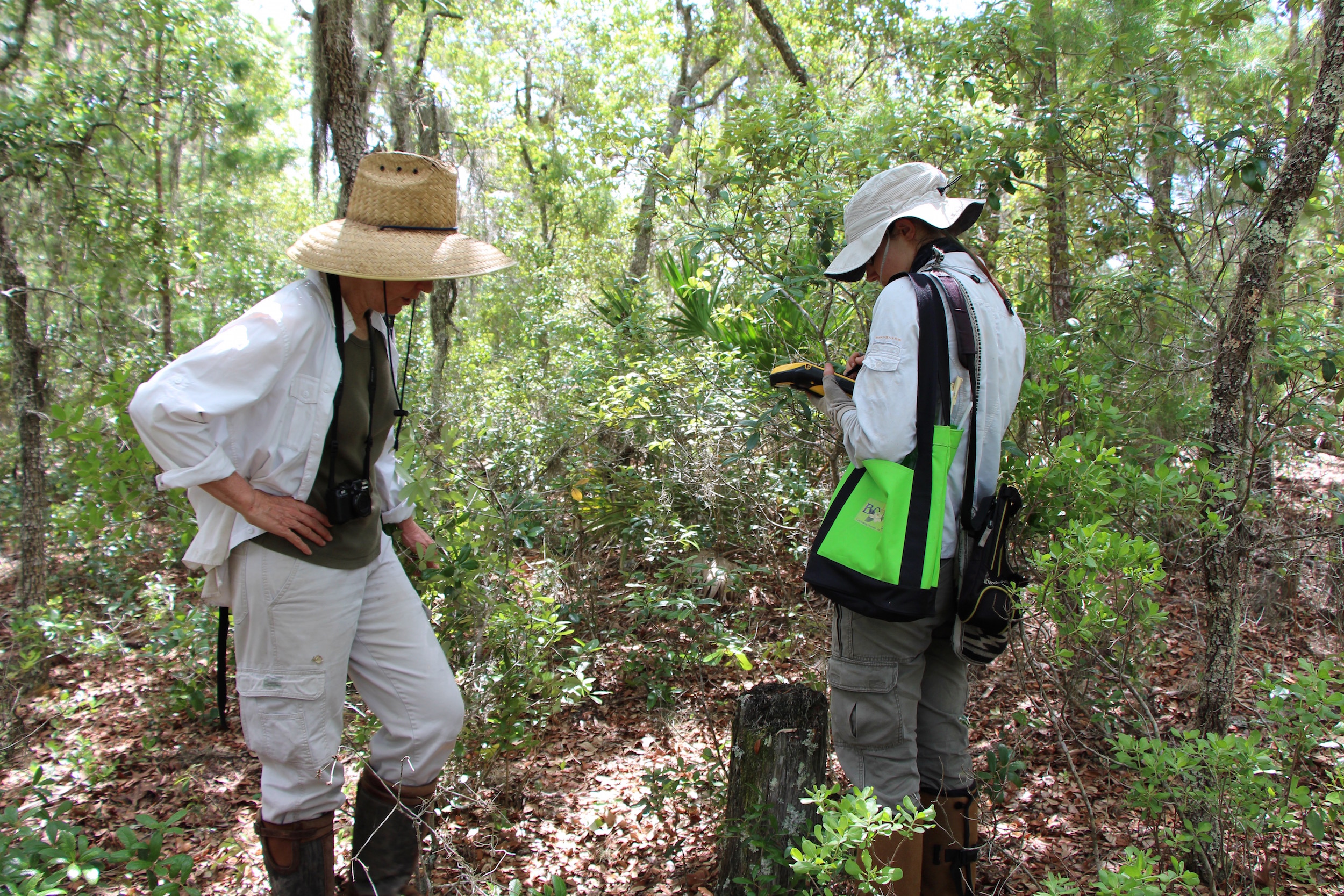
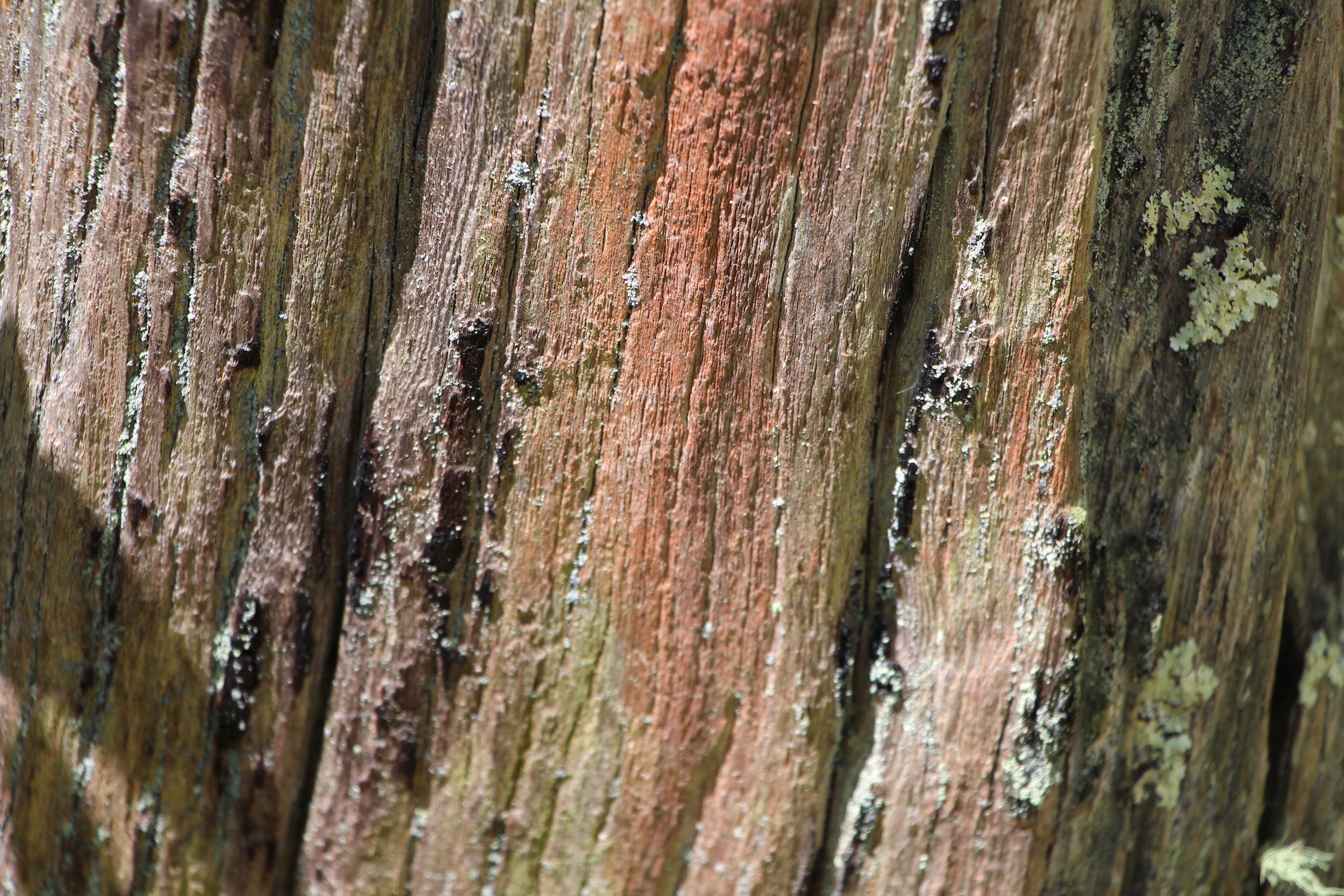
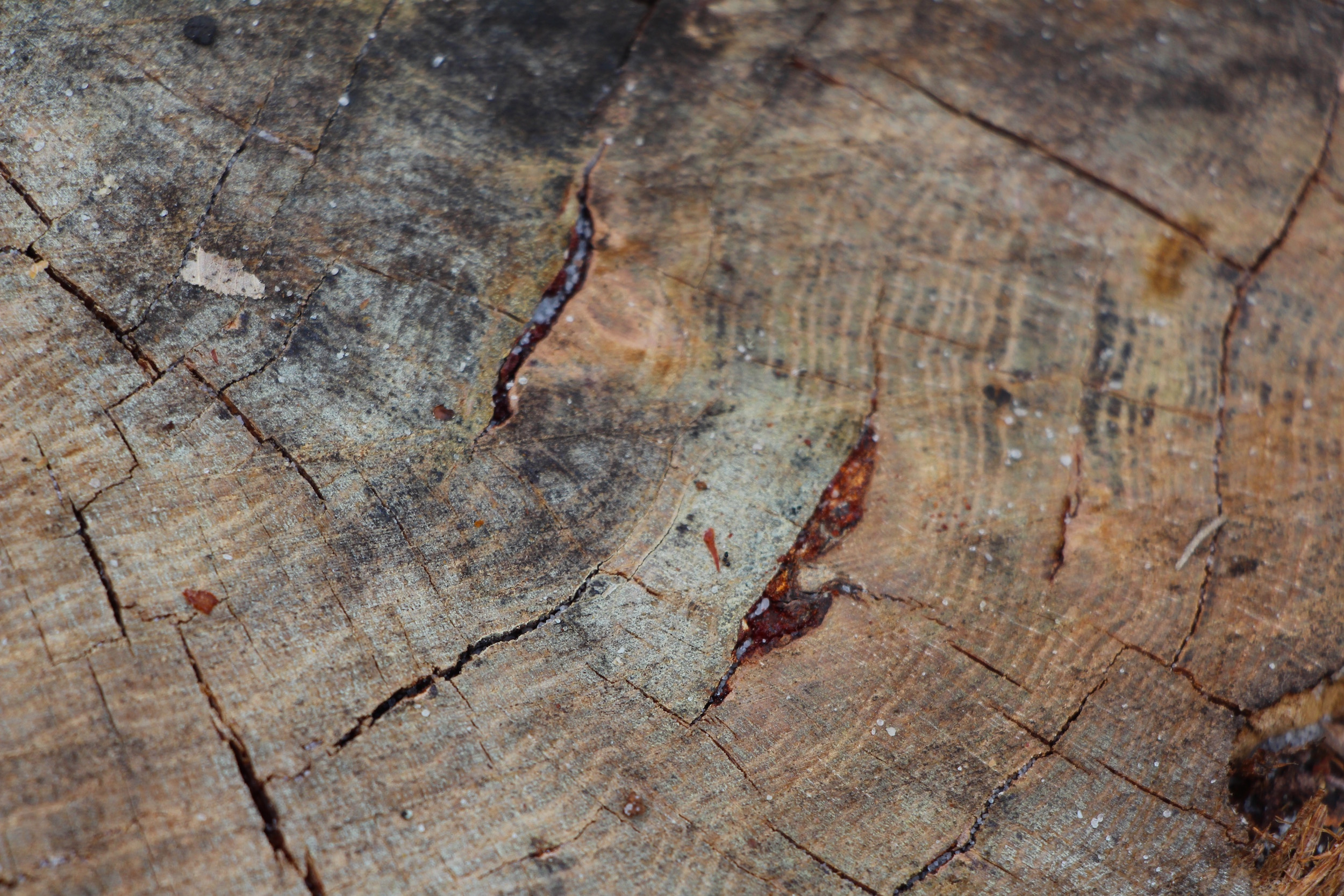
A Date for Every Scar
Starting with her regional chronology, Huffman matches up the ancient stump samples to the oldest samples from living trees.
“Once you have each ring dated,” she says, “then you can date the fire scars to identify the year and season when the fire occurred.”
The stumps from Tiger Creek and the adjacent state forest will join other samples in Huffman’s Southeast Coastal Plain Tree Ring Archive, a project to collect and archive ancient stumps and old-growth longleafs before development, removal and the reintroduction of fire destroys the data.
Huffman needs more samples to build a complete fire history for the area, but preliminary data from her research at the nearby Avon Park Air Force Range provides the first look Central Florida’s fire history.
Before the 1930s, fires occurred every 2 to 3 years, mostly during late May and June. These few weeks are critical transition point in Florida weather patterns — the lightning-packed summer storms are just beginning, but the landscape is still dry and flammable after the winter drought.
But that pattern changed dramatically after logging and turpentine operations began in the late 1920s, with the majority of fires switching to the dormant season, during January and February.
Stumps were scarce on the Avon Air Force study site, so the majority of data only extend back the 1820s.
“That’s why it’s so exciting to be working on Tiger Creek and the state forest,” says Huffman, “because they will help extend the chronology back in time and make a much stronger fire history.”
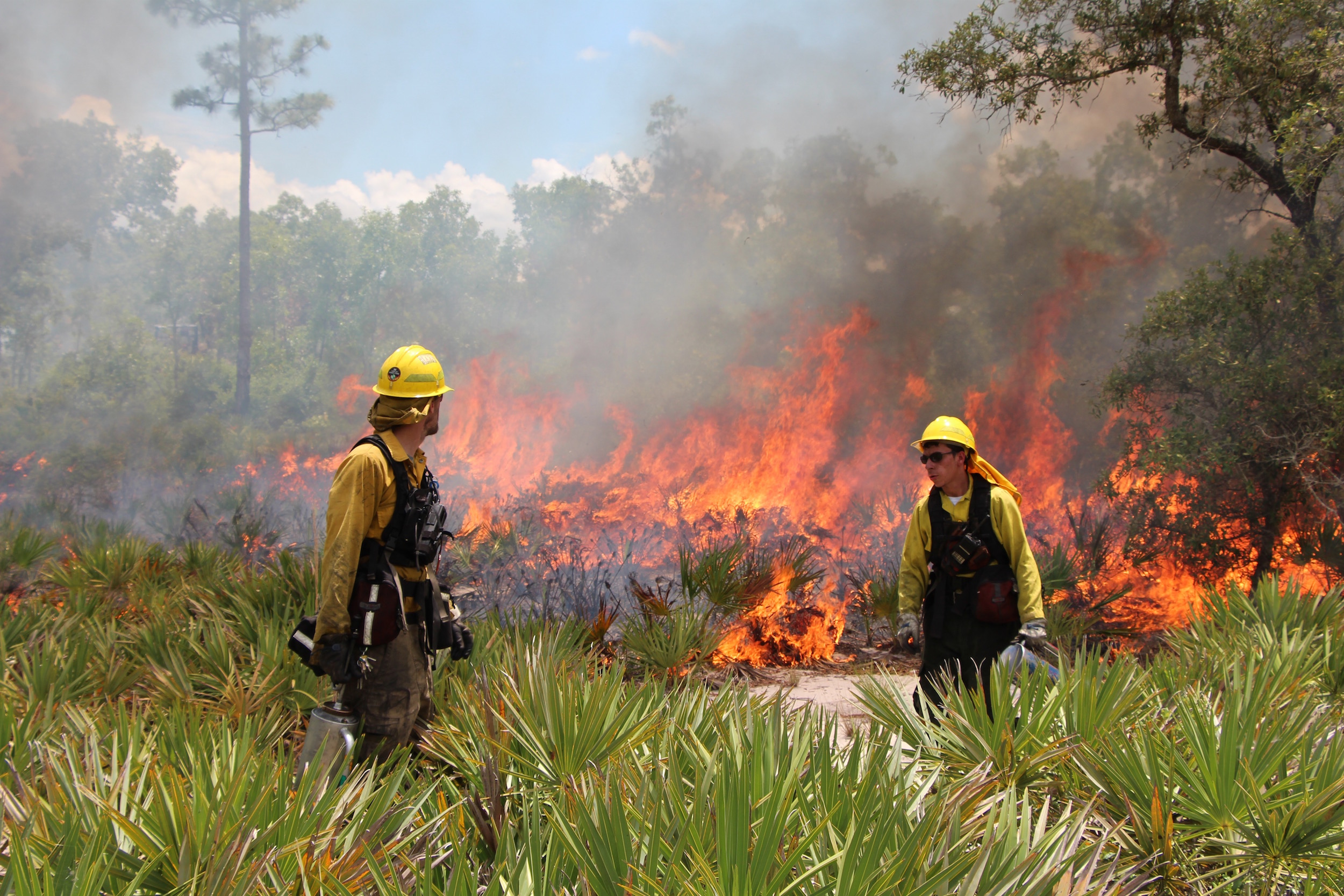
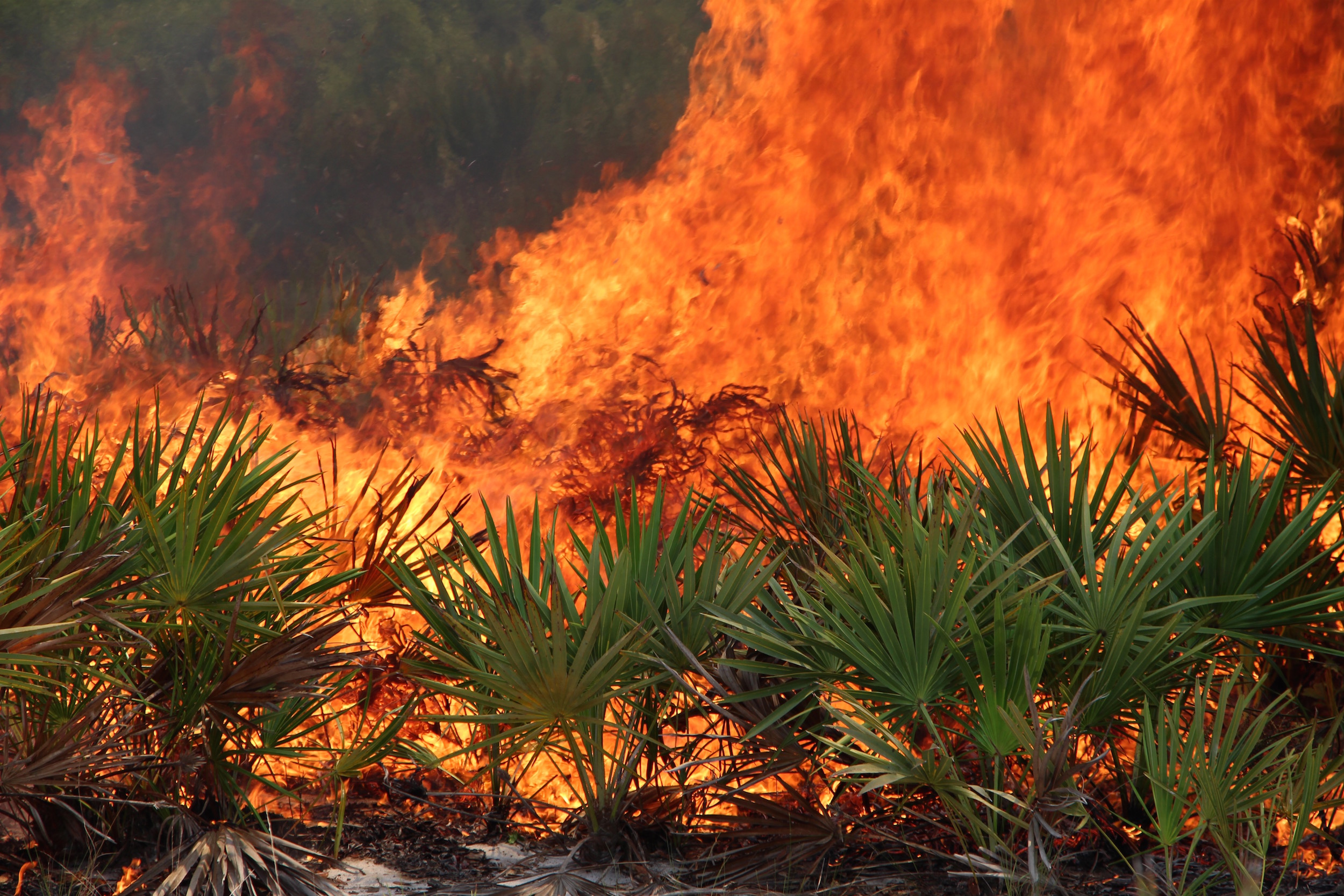
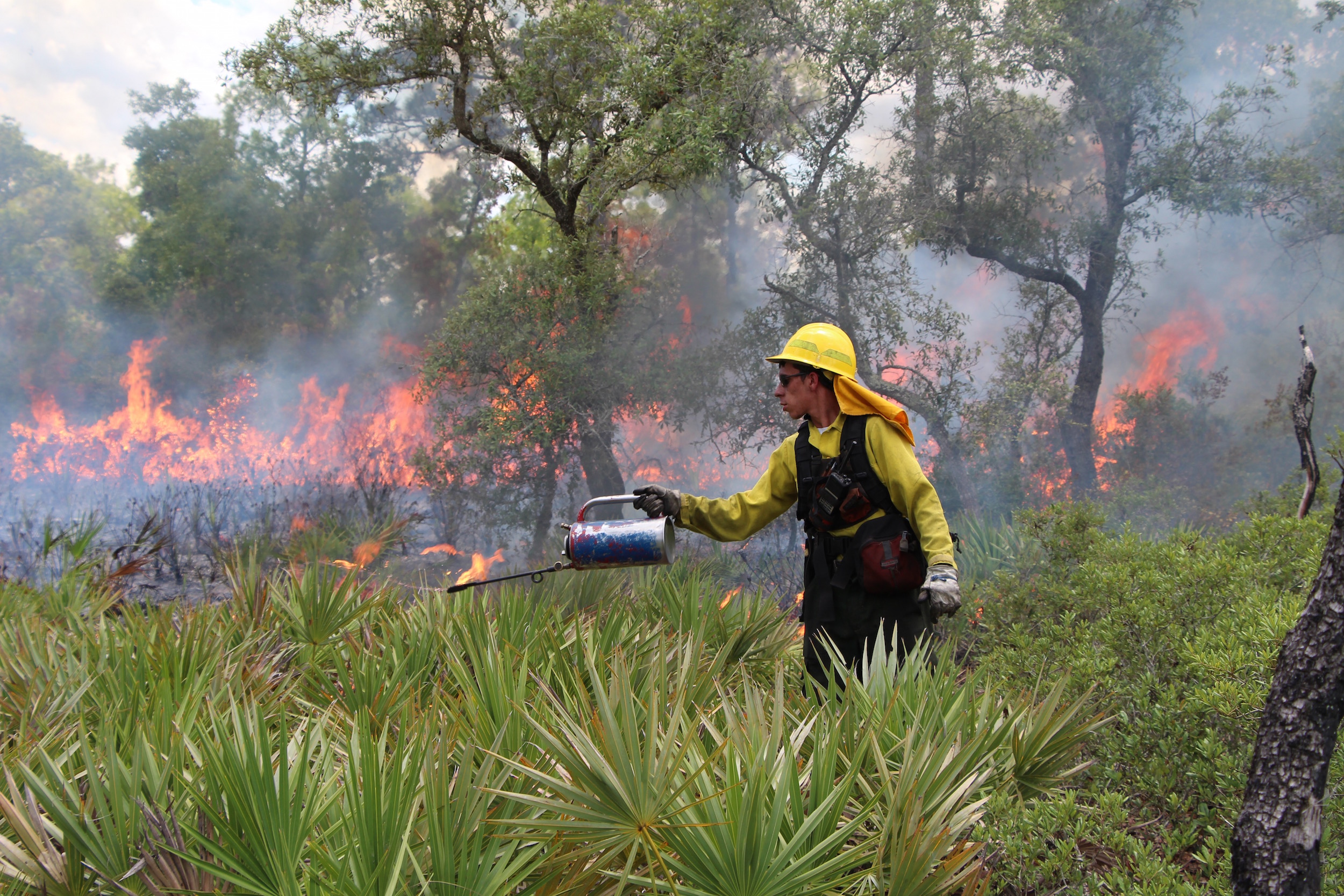
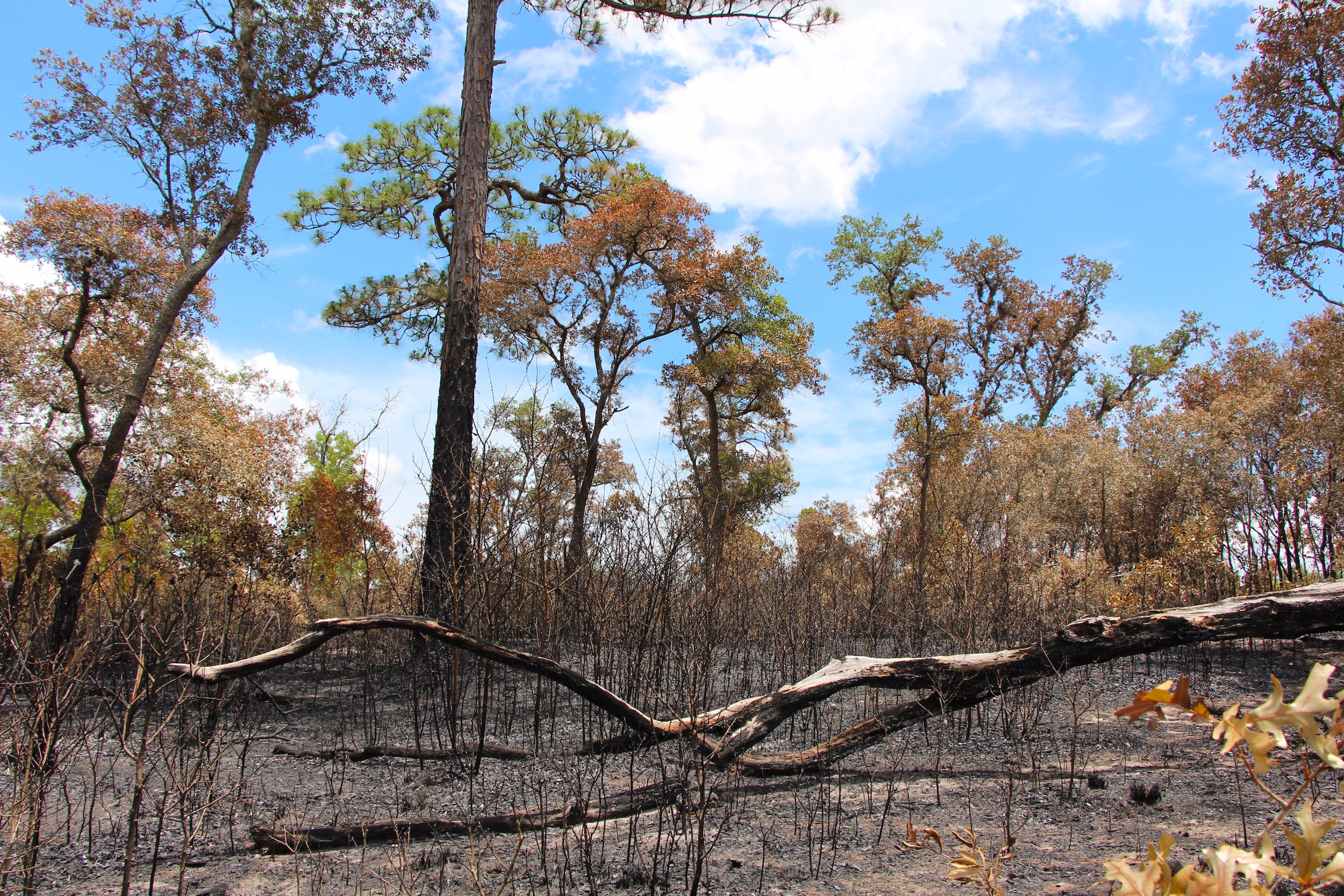

Setting the Scrub Alight
“We have fire on the ground on unit 37,” says a voice over the crackling walkie-talkie.
The sweet, acrid tang of wood smoke drifts through the oaks as the UTV rolls through a freshly-burned swath of palmettos. A small, cream-colored butterfly meanders through the charred, leafless fronds as a red-shouldered hawk calls in the distance.
Morrison explains that his crew is finishing off yesterday’s burn, igniting thick patches of oaks where yesterday’s fire didn’t carry.
“I can get some of the palmetto patches to go,” reports the burn crew over the walkie-talkie, “but I don’t have enough wind to pull it into the scrub.”
The gear-clad crew wades into a fresh patch of palmettos, drip-cans at the ready. Within seconds the landscape is ablaze, crackling violently as charred fragments of plant material swirl through the blue smoke. Then a column of flame erupts skyward around a longleaf pine as the fire consumes the highly flammable needle litter at the base of the tree.
“This is what it’s all about,” says Morrison, as we watch the flames overtake yet more palmettos.
“How regular fire actually was here is a question I’ve always wanted to be able to answer,” he says, “and Huffman’s work is informing me and other land managers about what fire actually did on the landscape.”




I worked with Jean Huffman at the St. Joseph Bay Buffer Preserve. I learned so much about fire ecology and was fascinated with her tree ring research and her work to protect so many rare and endangered species on the Preserve. She is one of the most dedicated scientists I have known and really has dedicated her life to this important project that has the potential to really control how future burns are planned for the betterment of this planet’s forests.
I’ve always wondered about using tree cores to put together fire histories. The big problem, as I saw it, was that most of the fires didn’t damage most of the trees, since they’re well adapted to them. However, any fire will probably damage some trees, and if you put enough tree records together, you could make a pretty good history of an area. That makes sense. I still suspect that this method would be biased against short fire-return intervals, because the shorter the interval, the less fuel accumulation, and the less likely trees will be scarred.
You’re totally right Michael. Fire tolerant trees adapted to a frequent, lower-severity fire regime are not perfect recorders of fire, primarily for the reasons you mentioned: (1) thick bark that prevents cambial injury; (2) self-pruning of branches that lifts the canopy off the ground; (3) fire is unable to injure the tree due to reduced fuel accumulation; etc. This means that fire histories created from fire scars are biased in favor of longer fire-return intervals. Keep in mind, however, that once a tree is scarred, the injured area will typically have exposed wood and no bark. This means that, as long as the tree hasn’t completely healed over this injured portion, it’s likelihood of gaining a scar in a subsequent fire increases. Fire history and fire ecology are fascinating fields of study, and I’m glad they’re getting continued face time through venues such as the Nature Conservancy.
When I volunteered at Okefenokee, the staff spent most of the winter and early spring doing prescribed burns. They too, are bringing back the longleaf pine ecosystem and working to increase the keystone species of that ecosystem, the red-cockaded woodpecker. Good to know that we are getting better data on the time between natural burns.